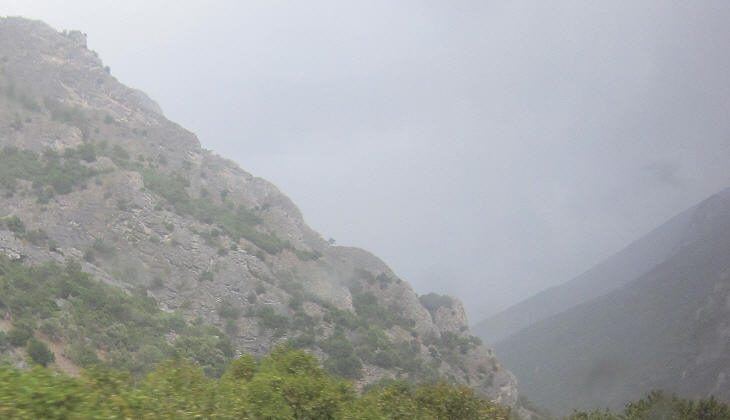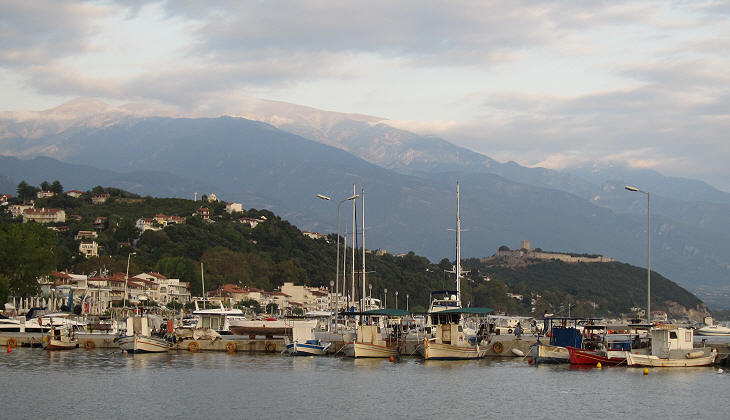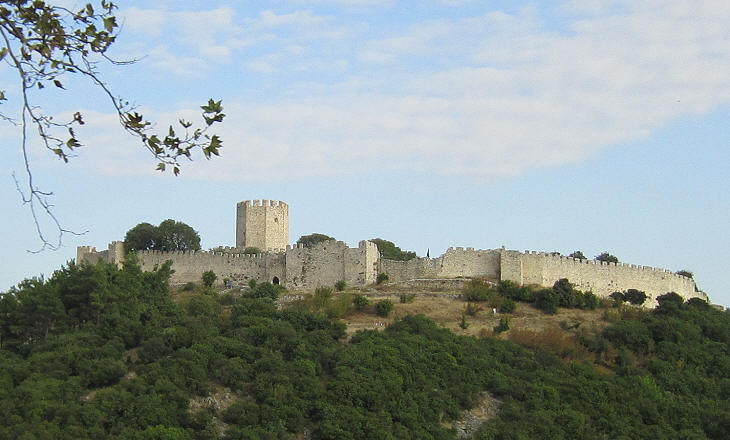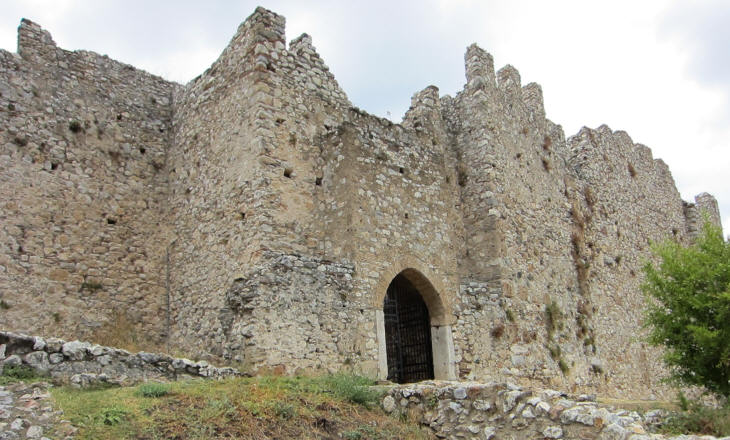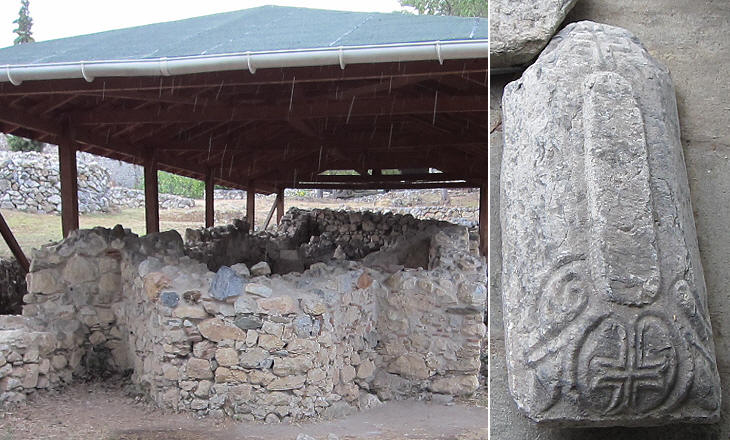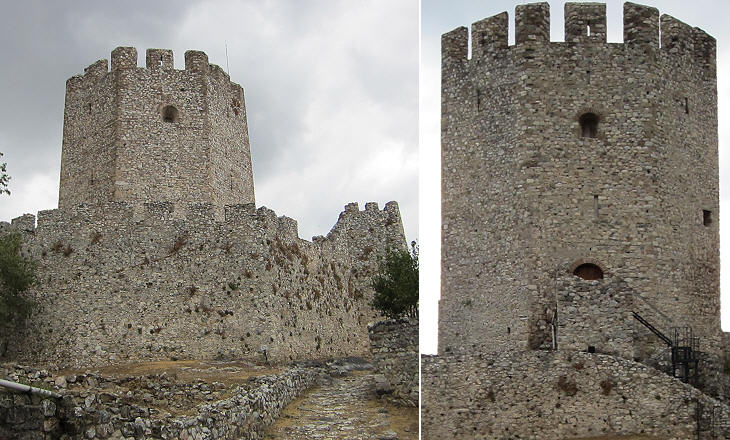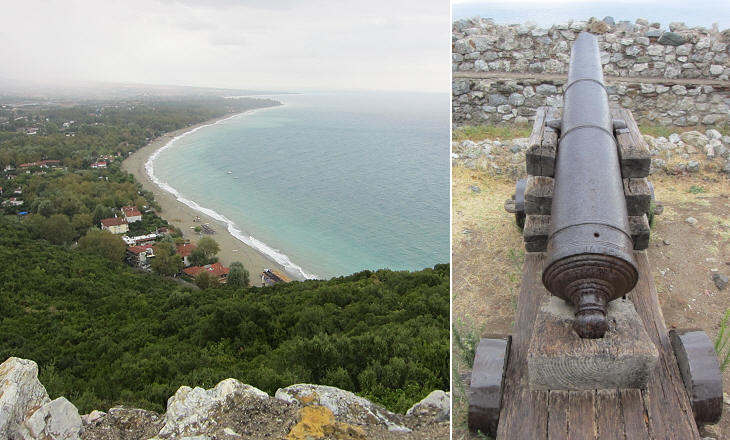  What's New! Detailed Sitemap All images © by Roberto Piperno, owner of the domain. Write to romapip@quipo.it. Text edited by Rosamie Moore. Page added in October 2010. |
 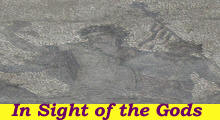 - page three: Platamonas - page three: Platamonas(Mosaic portraying Dionysus at Dion) In 1202 the knights of the Fourth Crusade, supported by Venice, intervened in a Byzantine Empire dynastic quarrel; eventually in April 1204 they seized Constantinople and acclaimed Baldwin of Flanders as the emperor of the newly founded Latin Empire. The leader of the Crusaders was Boniface of Montferrat, but the Venetians vetoed his appointment and he had to content himself with becoming King of Thessalonica; the borders of the new state cannot be defined with precision, but they included Thessaly in addition to the region surrounding the capital.
The only road between Thessalonica and Thessaly passed through the Vale of Tempe, a narrow gorge between the Olympus and Ossa massifs; in antiquity the site was regarded as being idyllic and the home of Apollo and the Muses, however because the vale is also the only natural corridor between Thessaly and the Aegean Sea, it is subject to violent thunderstorms; in the Middle Ages the vale had a rather sinister name: Lykostoma, Wolf's Mouth.
Boniface implemented the feudal system of western Europe in his newly acquired kingdom and he partitioned its territory among the knights who had followed him in the crusade; many of them came from Lombardy which is very near Montferrat; Orlando Pischia was assigned the control of the Vale of Tempe where he most likely built some sentry towers; rather than building a fortress in the vale he chose to build it outside its northern end on a hill projecting into the sea (he probably redesigned a previous Byzantine fortification). The fortress was known as Citro (It.) or Chitre (Fr.).
The Kingdom of Thessalonica lasted only a few years; Boniface was killed in 1207 during a battle with the Bulgarians; in 1224 Thessalonica was conquered by the Byzantine rulers of Epirus and the fortress of Platamonas is considered by Greek authorities as a Byzantine fortress, although some details such as the gate indicate a different origin. The outer curtain was strengthened by eight towers.
The re-establishment of a Byzantine Empire in Constantinople in 1261 did not bring a period of peace to mainland Greece which was divided up into a number of ephemeral states ruled by Serbs, Vlachs (Romanians), Italians, French, Catalans, with only minor territories remaining in the hands of the Byzantines.
The whole of mainland Greece was gradually conquered by the Ottomans; in 1382 they invaded Thessaly and in 1430 they captured Thessalonica; the fortress of Platamonas was seized between these two dates. There were five chapels inside the fortress; one of them was turned into a mosque, while the others were incorporated into other buildings. The Ottomans maintained the fortress, but for many centuries its strategic importance was minimal because Ottoman power was not under threat in this part of Greece.
A square section of the fortress was separated from the rest of the enclosure by walls: it was located on slightly higher ground and inside it a circular wall protected a massive octagonal tower; this system of fortifications was clearly obsolete after the development of cannon in the XVth century, but the Ottomans did not make any major attempt to modify it.
The military importance of the fortress was revived in 1881 when at the end of lengthy negotiations Thessaly was annexed to the Kingdom of Greece, while Mount Olympus remained in Ottoman hands; in 1897 an attempt by the Greeks to invade Macedonia was repelled and the border was slightly redesigned in favour of the Ottomans; the 1900 Times Atlas of the World (see page one) indicated Platamonas as being an important fortress. In 1912 an alliance between Montenegro, Serbia, Bulgaria and Greece waged war on the Ottoman Empire; the Greeks attacked on the western side of Mount Olympus, rather than along the sea and in a matter of weeks conquered Veria and Thessalonica. Today the fortress is a nice landmark for a long series of sea resorts, which are very popular in Greece and in Eastern Europe. Return to page one to see the sanctuaries of Dion or to page two to see the town. Clickable Map of the Ionian and Aegean Seas with links to other locations covered in this website (opens in a separate window) SEE THESE OTHER EXHIBITIONS (for a full list see my detailed index). 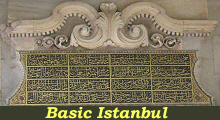 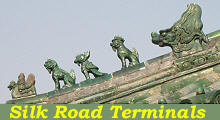 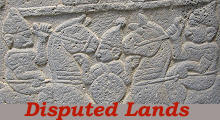 |
